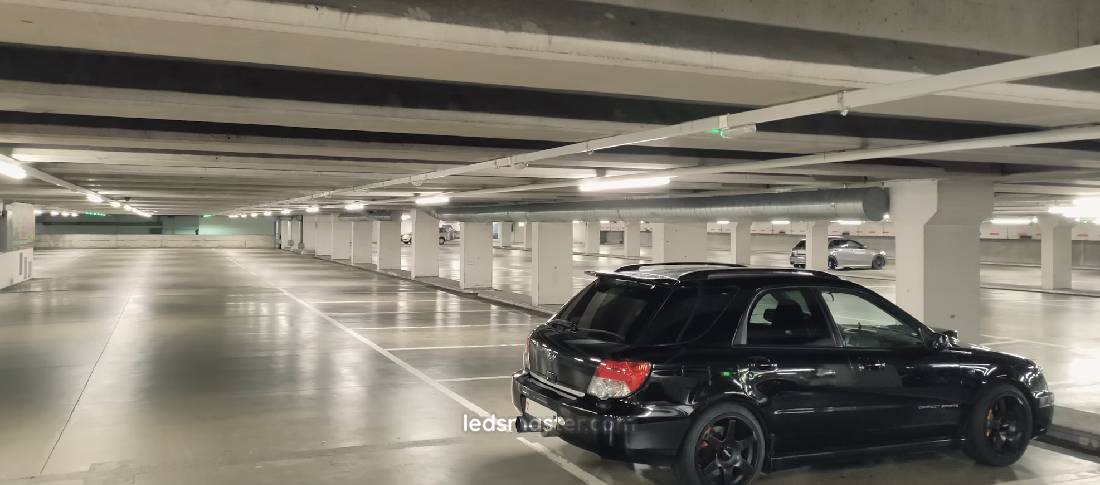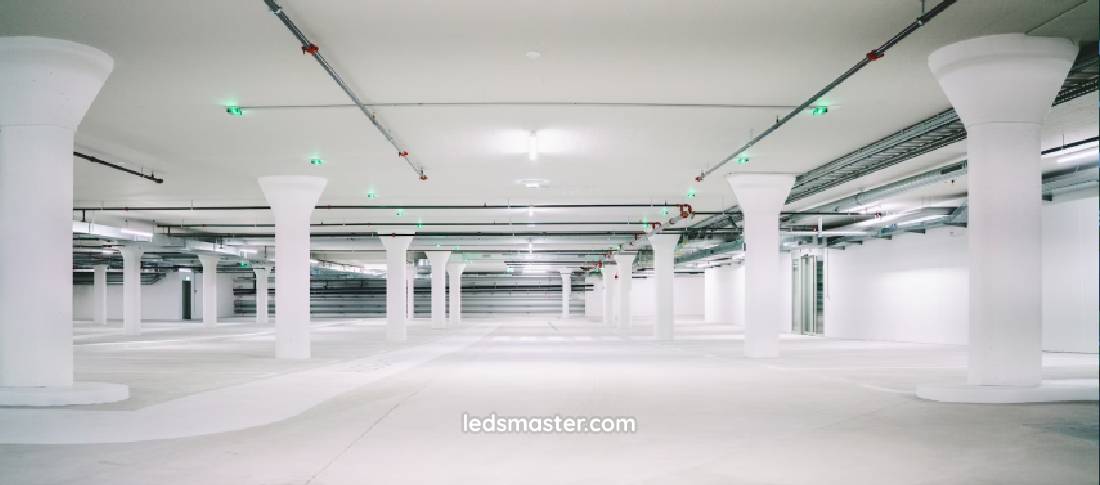Enhance safety and visibility with our top-of-the-line parking lot lighting solutions. Perfect for commercial, residential, and industrial spaces, our energy-efficient lights ensure clear illumination and a welcoming environment. Upgrade your parking areas with our durable and reliable lighting today.
Discover unparalleled illumination for your parking areas with our innovative lighting solutions. Designed for maximum efficiency and reliability, our advanced fixtures ensure superior visibility and safety. Whether for commercial complexes or residential communities, our robust lights are engineered to enhance security and aesthetics effortlessly. Upgrade your parking lot with the latest in lighting technology today.
Get your complimentary lighting design today
Ensuring these areas are well-lit not only enhances safety and security but also improves user experience and reduces operational costs for property owners. This article explores various aspects of parking lot lighting, from optimal illumination options to sustainable design practices.
Effective lighting in parking lots can deter criminal activities, reduce accidents, and create a more welcoming atmosphere for visitors. As technology advances, the options for lighting solutions have expanded, offering more efficient and eco-friendly alternatives. Understanding the best practices and innovations in parking lot lighting is crucial for property managers and urban planners aiming to create safer, more efficient, and environmentally sustainable spaces.

Table of Contents
ToggleThe technological advancements in LED lighting have transformed it into a versatile and highly efficient option for illuminating parking lots. One of the primary benefits of LEDs is their superior energy efficiency compared to traditional lighting systems, such as metal halide or fluorescent bulbs.
LEDs consume less power while delivering the same or greater illumination levels. This lower energy consumption translates into reduced electricity costs for property owners, making LEDs a financially savvy choice in the long term.
In addition to energy efficiency, LEDs have a considerably longer lifespan than traditional lighting options. While incandescent bulbs typically last for around 1,000 hours and metal halide fixtures may last for approximately 10,000 hours, LED lights can last anywhere from 25,000 to 50,000 hours or more, depending on the quality of the fixture.
This extended lifespan not only means fewer replacements but also minimizes maintenance efforts and costs associated with changing bulbs and fixtures.
Furthermore, LEDs emit light in a specific direction, providing focused illumination where it is most needed. This directional lighting minimizes light pollution, which is particularly beneficial in urban areas where excessive lighting can disrupt local wildlife and contribute to the urban heat island effect.
The ability to control light distribution effectively enhances visibility for drivers and pedestrians, ensuring that critical areas such as entryways, walkways, and parking spaces are adequately lit.
The versatility of LED lighting systems is another reason for their widespread adoption in parking lot illumination. Unlike traditional lighting options that often come in fixed wattages and designs, LED technology offers a wide range of fixtures, colors, and brightness levels.
This flexibility allows property owners to tailor their lighting solutions to meet the specific needs of their parking facilities. Customizable lighting solutions can enhance the overall user experience.
For instance, LED fixtures can be configured to provide brighter light in areas with higher foot traffic, such as near entry points or crosswalks, while allowing for lower light levels in less frequented areas.
This ability to adjust brightness levels based on usage patterns ensures that energy is used efficiently while maintaining safety and visibility.
Moreover, modern LED systems can be integrated with advanced control technologies, such as sensors and timers, to optimize energy usage further. Motion sensors can detect occupancy and adjust lighting levels accordingly, ensuring that lights are only on when needed.
This not only conserves energy but also extends the lifespan of the fixtures, as they are not continuously operating when the parking lot is empty.
The energy efficiency of LEDs not only results in lower utility bills but also decreases the overall environmental impact of parking facilities. By significantly lowering energy consumption, LEDs contribute to reduced greenhouse gas emissions.
Property owners who switch to LED lighting are making a meaningful contribution to sustainability efforts, supporting local and global initiatives aimed at combating climate change.
Additionally, many organizations are retrofitting existing lighting systems with LEDs to align with green building certifications and sustainability initiatives.
In terms of sustainability, the manufacturing process of LEDs is also less resource-intensive compared to traditional lighting options. LEDs are free of hazardous materials such as mercury, which is commonly found in fluorescent bulbs.
This makes them safer for the environment and easier to dispose of at the end of their lifespan, further enhancing their eco-friendly credentials.
Illumination is a key factor in ensuring safety and security in parking lots. Adequate lighting improves visibility for drivers and pedestrians, reducing the likelihood of accidents and enhancing the overall sense of security.
Inadequate lighting can create hazardous conditions, such as obscured obstacles, leading to potential injuries or accidents. LED lighting provides high-quality light that enhances color rendering and visibility, making it easier for individuals to identify potential hazards, including pedestrians, vehicles, and obstacles.
The directional nature of LED lighting ensures that light is focused where it is needed most, effectively reducing dark spots and shadows that can compromise safety. Moreover, well-lit parking lots deter criminal activity, creating a safer environment for users.
Research has shown that increased lighting in outdoor areas can reduce crime rates, as potential offenders are less likely to engage in illicit activities when they know they are being observed.
The bright, clear light provided by LEDs enhances the feeling of security, encouraging more people to use the parking facility.
In designing parking lot lighting, compliance with established lighting levels and standards is necessary. The Illuminating Engineering Society of North America (IESNA) provides comprehensive guidelines for light levels based on factors such as the size, usage, and location of the parking lot.
These guidelines ensure that parking lots are adequately illuminated to enhance safety and visibility. General parking areas typically require lower light levels than entryways or pedestrian walkways.
For instance, the IESNA recommends a minimum illumination level of 0.2 foot-candles for general parking areas, while entryways and pedestrian paths may require 1.0 foot-candle or more. Understanding these standards is essential for designing lighting solutions that meet safety requirements while minimizing energy consumption.
In addition to meeting minimum lighting levels, property owners must also consider the specific needs of different areas within the parking lot. Areas designated for emergency exits, loading docks, or other critical functions may require higher light levels to ensure safe operation during nighttime activities.
By carefully planning the placement and intensity of lighting fixtures according to these guidelines, property owners can create a well-lit environment that enhances both safety and functionality.
Recent advancements in lighting technology and controls have allowed for more precise management of lighting levels in parking lots.
Smart lighting systems equipped with sensors and programmable controls can automatically adjust light output based on ambient light conditions and occupancy patterns.
This capability enhances energy efficiency while ensuring consistent illumination levels throughout the parking lot, reducing operational costs and improving the overall user experience.
For instance, adaptive lighting systems can dim the lights in areas that are unoccupied while maintaining higher illumination levels in active zones.
This not only conserves energy but also prolongs the life of the fixtures, further reducing maintenance costs. Furthermore, advanced controls allow property owners to monitor and manage their lighting systems remotely, providing real-time insights into energy usage and performance.
The integration of smart technologies into parking lot design can also future-proof lighting systems against evolving energy codes and sustainability goals. As energy regulations become more stringent, the ability to adapt and optimize lighting systems will be increasingly valuable for property owners.
While the initial investment in LED lighting may be higher than traditional options, the long-term cost savings associated with LEDs make them a wise financial choice for property owners.
The return on investment (ROI) for LED lighting can often be realized within a few years, depending on the size of the parking lot and the existing lighting technology being replaced. Furthermore, many utility companies offer rebates and incentives for switching to energy-efficient lighting solutions, which can offset the initial installation costs.
Moreover, as energy costs continue to rise, the financial benefits of investing in LED lighting are likely to increase. By making the switch to LED technology now, property owners can shield themselves from future price hikes and position themselves favorably in an increasingly competitive marketplace.
The flexibility offered by LED lighting systems extends to design and installation options. Property owners can choose from a variety of fixtures, mounting heights, and light distribution patterns to create an optimal lighting solution tailored to their specific needs.
For example, a parking facility with multiple levels may require different lighting solutions for each level, while outdoor surface lots may necessitate different fixtures for walkways, entry points, and drive aisles.
Adjustable lighting systems enable operators to modify brightness levels depending on usage patterns. Areas with higher traffic during peak hours can have increased illumination, while less frequented zones can have lower light levels.
This flexibility not only ensures that energy is used efficiently but also enhances the overall user experience.
While safety and functionality are considerations in parking lot lighting, aesthetics also play a significant role in the overall design. Well-designed lighting can enhance the visual appeal of a parking facility, creating a welcoming atmosphere for users.
LED lights are available in various color temperatures, allowing property owners to choose lighting that complements the architecture and landscaping of the parking lot. For instance, warmer color temperatures can create a more inviting environment, while cooler temperatures can evoke a sense of modernity and cleanliness.
By integrating aesthetically pleasing lighting design with the surrounding landscape, property owners can create an environment that enhances user comfort and satisfaction.

Incorporating sustainable practices into parking lot lighting design not only reduces environmental impact but also lowers long-term operational costs. Sustainable lighting solutions include:
As previously mentioned, LEDs consume less energy and have a longer lifespan, reducing maintenance and replacement costs. This efficiency not only lowers electricity bills but also minimizes the environmental impact associated with energy consumption. Additionally, the robust construction of LED fixtures makes them more resistant to vibrations and shocks, ensuring reliable performance in harsh outdoor environments. Their instant-on capability and superior color rendering enhance safety and visibility, further solidifying LEDs as the preferred choice for efficient and effective parking lot lighting solutions.
Utilizing solar panels to power parking lot lights harnesses renewable energy directly from the sun, reducing dependence on traditional electrical grids. This makes solar-powered lighting an ideal choice for remote or off-grid locations where grid access is limited. Solar panels convert sunlight into electricity stored in batteries, ensuring reliable illumination day and night without ongoing electricity costs. Beyond cost savings, solar-powered systems require minimal maintenance, enhance resilience against power outages, and reduce carbon footprints, aligning with sustainability goals and promoting environmental stewardship.
Implementing smart lighting controls in parking lots, including motion sensors and dimming capabilities, boosts energy efficiency by adjusting light levels based on occupancy and ambient light. Motion sensors activate lights when movement is detected, minimizing energy use during inactive times. Dimming adjusts brightness according to natural light, ensuring visibility while saving power. This approach not only cuts costs but also prolongs fixture lifespans, making smart controls a sustainable solution for modern parking lot lighting.
By choosing the right illumination options, adhering to lighting standards, and integrating sustainable design practices, property owners and managers can create well-lit, efficient parking environments that benefit both users and the community at large.